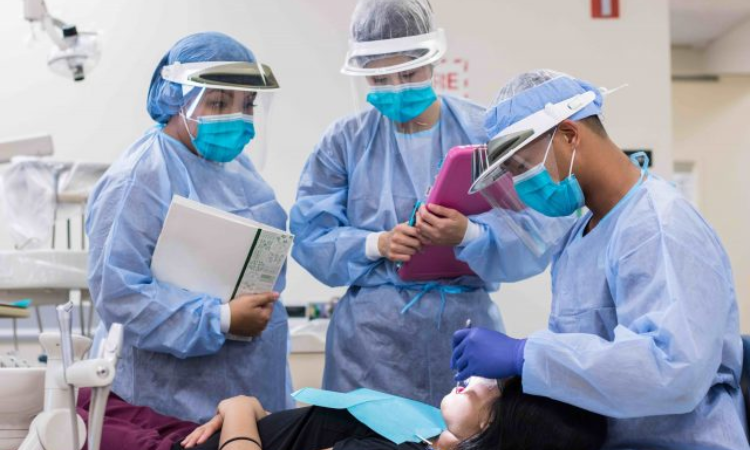
CHICAGO: Nearly two years into the pandemic with widespread availability of COVID-19 vaccines and a decrease in infections, new studies reveal dental hygienists have low COVID-19 infection rates and high vaccination acceptance. In addition, less than half of dental hygienists that left employment early in the pandemic have returned to the workforce in 2021, and staffing challenges, exacerbated by the pandemic, persist.
The research, published in the February issue of The Journal of Dental Hygiene, is part of collaborative research efforts between the American Dental Hygienists’ Association (ADHA) and the American Dental Association (ADA) on the impact of COVID-19 on employment, infection prevention and vaccine acceptance among dental hygienists. The data updated findings from a previous longitudinal study conducted over a 12-month period from September 2020 to August 2021 with a panel of 6,976 dental hygienists across the U.S., Puerto Rico and the Virgin Islands.
“This study of dental hygienists has shown us the profound impact of COVID-19 on clinical practice, as well as the value of disease prevention measures,” said JoAnn Gurenlian, RDH., MS., PhD, AFAAOM., a lead author of the research and ADHA’s director of education and research. “Workplace safety is of paramount importance to dental hygienists, and it has an effect on employment patterns. This underscores the need to adhere to infection control guidance and proper PPE.”
Infection and Vaccination Rates
Despite initial concerns that dental hygienists were at increased risk of COVID-19, the updated research shows they have a lower COVID-19 cumulative prevalence (8.8%) than the general U.S. population (11.7%). Results also reveal that 75.4% of U.S. dental hygienists have been fully vaccinated against COVID-19, a higher proportion than the general public and healthcare workers outside of dentistry overall at the time.
“We’re pleased to see that dental hygienists have demonstrated continued low incidence of infection and high vaccination, proving the profession’s ability to mitigate risk while providing care in a safe manner,” said Cameron G. Estrich, M.P.H., Ph.D., health research analyst with the ADA Science & Research Institute. “Increased vaccine availability and greater supplies of personal protective equipment (PPE) should further enable dental teams to continue to follow infection prevention measures to reduce the risk of COVID-19 transmission.”
Challenges Persist in Employment
As of August 2021, less than half of dental hygienists that left employment during the pandemic had returned to work. According to the study, 7.9% of respondents that had been employed in March 2020 were not working six months later in September 2020. When the study concluded in August 2021, that number decreased to 4.9%.
However, the pandemic has impacted staffing levels in industries across the country, and the dental profession is not exempt.
While the number of hygienists that left the workforce rebounded from a high of 7.9% in 2020 to 4.9% in 2021, a total of 1.6% of study participants no longer intended to work as dental hygienists, possibly representing a permanent reduction of 3,300 dental hygienists nationwide.
Future Opportunities for Risk Mitigation
The study authors believe opportunities exist for hygienists to play an important role in public health and safety. However, there is a need for ongoing and increased education and policies to support the continued use of PPE and infection control and prevention procedures, as recommended by the CDC and required by government regulatory agencies.
“Our shared understanding of what dental hygienists are experiencing provides us with essential evidence-based direction for how we can support safe and supportive workplaces, deliver care safely to patients and help define lasting practice improvements that may emerge from this pandemic.” said ADHA CEO Ann Battrell
The ADHA and the ADA will continue to work together to further understand the impact of COVID-19 on the dental team.


